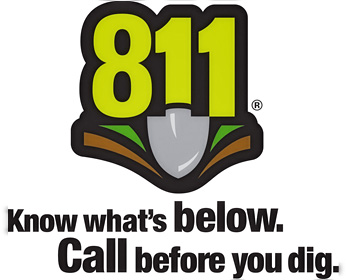811 Campaign
 Government and industry statistics show that improper or unauthorized digging near a pipeline is the most common cause of pipeline damage.
Government and industry statistics show that improper or unauthorized digging near a pipeline is the most common cause of pipeline damage.
Communities and schools can help protect residents, students, facilities and pipelines by being aware of activities near the pipeline and calling the pipeline company or local law enforcement with questions or concerns.
